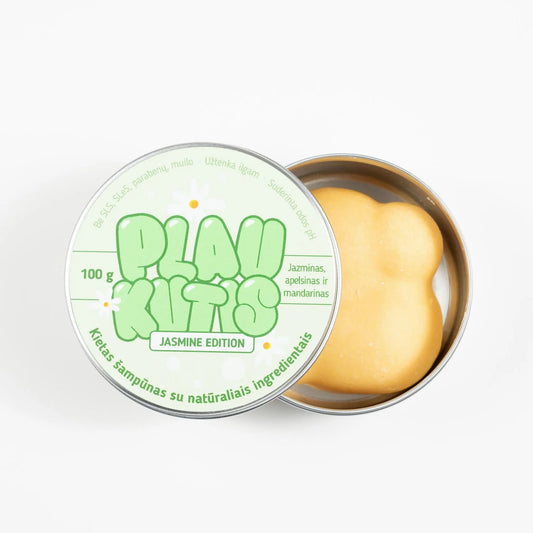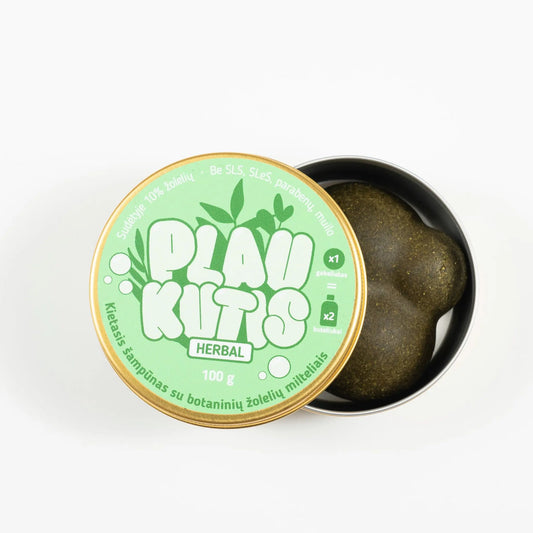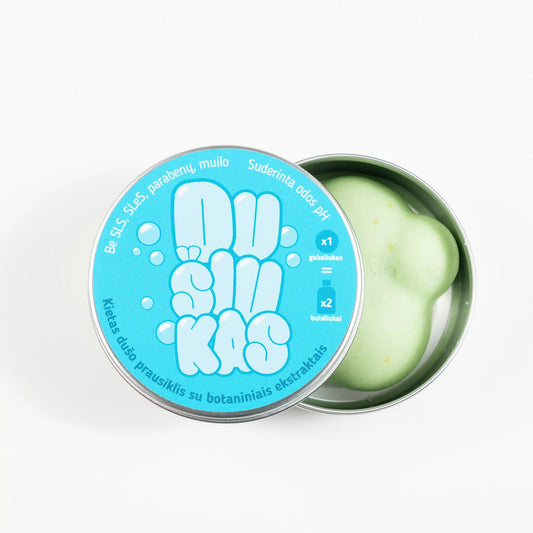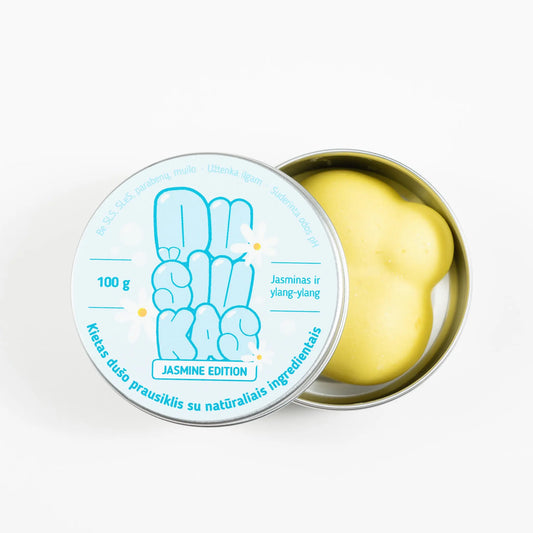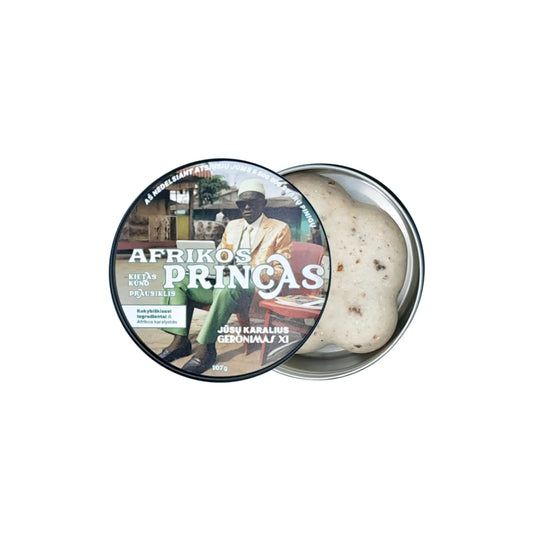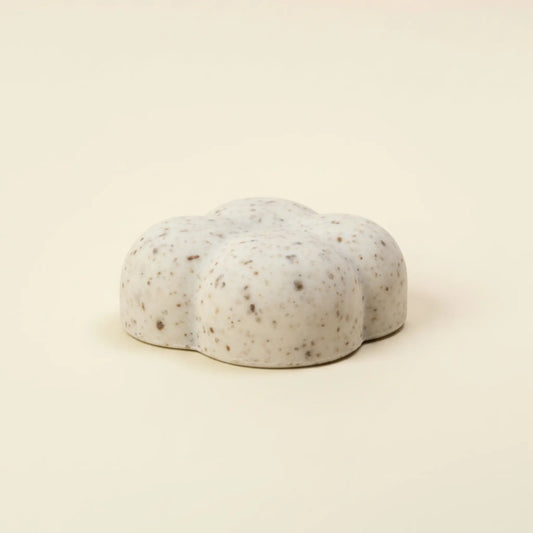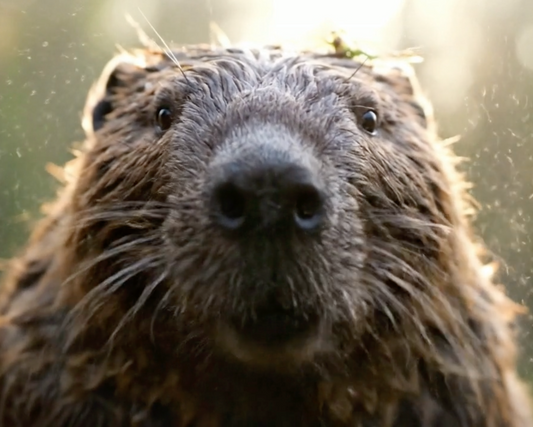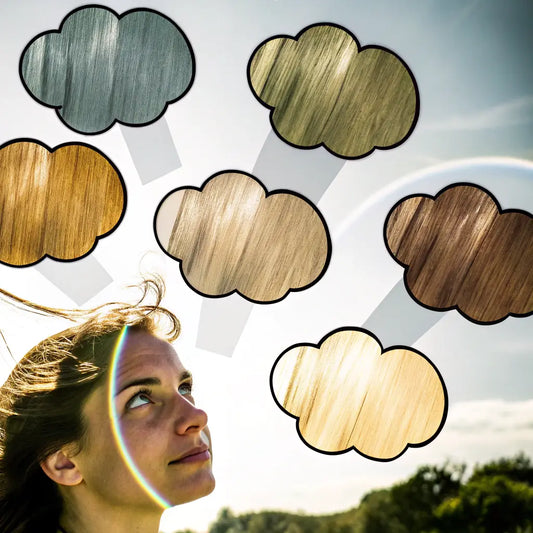1. Why we so often confuse fading with change
Have you ever looked in the mirror and thought, “Wait… was my hair always this color?” Maybe your dark brown looks more coppery. Or maybe your warm blonde has turned cold and washed out. You probably thought the dye was just fading. But what if it’s actually your hair pigment changing on its own?
This confusion is very common—especially among women aged 18-54. According to a 2021 Mintel study, more than 62% of women who color their hair admitted that they can't accurately distinguish whether the color loss is due to fading or a natural change.
These two processes often look the same—loss of color, unexpected shades, unevenness. But their causes are completely different . And that changes everything.

Why is it important to know the difference?
-
Wrong solution = more damage. If you think it's just fading and dyeing again, when in fact your pigment is changing from the inside, you could be doing even more damage to your hair.
-
Hair reflects your body's internal state. Dermatologist Dr. Susan Bard says, "Hair can reveal everything—from stress to thyroid problems."
-
It's expensive. On average, women in the US spend $250-$750 a year on hair coloring. The wrong reason = money wasted.
💡 Did you know? In ancient China, premature graying was considered a sign of emotional or spiritual imbalance. Meanwhile, ancient Roman women used lead combs with vinegar to artificially darken their hair—dark hair represented strength.
In this article you will learn:
-
The difference between natural pigment and artificial dye
-
How to tell fading from real change
-
What shampoos, sun, heat and health do
Ready to decipher what your hair is telling you? Let's get started!

2. Hair Pigment 101: Natural Color vs. Artificial Dyes
Let's start with the basics: what determines your hair color anyway?
2.1 Natural hair color and melanin
Your natural hair color is determined by melanin , the same pigment that gives your skin and eyes their color. It's produced by melanocytes , which are located in your hair follicles. As your hair grows, these cells deposit melanin into each strand, essentially coloring it from the inside out.
There are two main types of melanin :
-
Eumelanin – gives brown and black shades. The more of it, the darker the hair.
-
Pheomelanin – gives yellow or pink tones. More pheomelanin = lighter or warmer color.
Your unique hair color depends on the ratio of these pigments . For example:
-
Blondes have little eumelanin , but more pheomelanin.
-
Redheads have almost exclusively pheomelanin .
-
Dark-haired women have a lot of eumelanin .
💡 Interesting fact: Redheads only make up 1-2% of the world's population , but their hair has the most pigment per strand . Meanwhile, blondes have more hair on their heads (about 150,000), and redheads have about 90,000.
Over time, melanin production slows down . This can be a natural part of aging, but it can also be caused by genetics, health, or even stress. Then, hair starts to lose pigment from the inside out – and it starts to turn gray or change color.
2.2 How hair dye works
And now – about the color from the bottle.
Artificial dyes work differently than natural pigments. Depending on the type, they either coat the hair from the outside or penetrate the inside (the cortex).
Briefly about the different types of paints:
-
Temporary dye – only on the surface, washes off after 1-3 washes.
-
Semi-permanent dye – penetrates a little deeper, lasts 6-12 washes.
-
Demi-permanent dye – deeper, but without ammonia. Lasts 20-28 washes.
-
Permanent hair dye – uses ammonia to open the cuticle and infuse color into the hair. Changes the hair structure and often needs to be refreshed every 4-6 weeks.
🧪 Interesting fact about the study: The Journal of Cosmetic Science published a study that found that more than 85% of hair color fading is caused by water , not time. When the hair cuticle opens (from hot water, shampoo, or heat), the color molecules "escape."
🎨 Historical curiosity: During the Renaissance, women in Venice would lighten their hair with a mixture of honey and saffron, sitting in the sun with hats with the top cut out – so that UV rays would help the “dyeing”. The first sun-activated dyeing method!

3. Signs of internal pigment changes
Hair color changes aren't always caused by dye. Sometimes, the change comes from within your body. This is called natural pigment changes , and it's caused by biological processes, not shampoo or the sun.
How to tell if your hair is changing color naturally?
1. Change starts from the roots, not the tips
If you notice that your roots are growing lighter or grayer while your long strands remain dark, it's a sign that your hair's pigment is fading. Unlike dye fading, which starts at the ends, natural pigment changes always start at the scalp .
👀 Example: If you dye your hair dark brown, but the roots start to grow silver or gray, it's not dye fading.
2. The process is slow and continuous
Natural pigment loss occurs gradually , over months or even years. It's not like a sudden fade after a few washes. Also, once pigment production in a follicle stops, it usually doesn't regenerate .
💡 Fact: Each hair follicle goes through about 20-25 cycles in a person's lifetime. If melanin production stops, hair grows gray or white.
3. Color may change unevenly
Not all hair loses pigment at the same time. So sometimes you'll notice uneven shades or lighter strands , especially near your temples, crown, or forehead. This can create a "salt and pepper" effect or the appearance of oddly light streaks.
📌 Attention: This is often confused with sun-bleached hair or unevenly colored hair.

4. Related to age, health, or hormones
-
Genetics – if your mother or grandmother went gray early, you will likely go gray earlier too.
-
Hormonal changes – during puberty, pregnancy, or menopause, melanin production may decrease.
-
Stress – Studies in mice have shown that stress depletes melanocyte stem cells. Initial research in humans shows similar results.
-
Health problems – thyroid disorders, anemia, or vitamin B12 deficiency can lead to pigment loss.
🧬 Research Insight: In 2020, researchers at Columbia University found that in some cases, hair can regain pigment if stress is reduced. This is one of the first studies to clearly show the connection between emotional health and pigment .
💬 Expert Comment: “When your body is out of balance, your hair is the first to show it,” says dermatologist Dr. Michelle Henry. “Changes in color, texture, or density are warning signs.”

4. Signs of hair dye fading
Now that we understand what natural pigment loss looks like, let's take a look at hair dye fading . This process happens externally - it's the fading of artificial color from the surface or inner layers of the hair.
How do you know that it's the dye that's fading, and not your natural color?
1. Fade starts at the ends, not the roots
Unlike pigment loss, which starts at the roots, dye fading is most often seen in the middle and back of the hair .
This is because these areas are exposed for longer:
-
More washes
-
More sunlight
-
More thermal shaping
🎯 Telltale Sign: If your roots still look bright and your ends are dull, orange, or even purple, your dye is probably fading.
2. Fading occurs quickly – within a few weeks
Even the best quality paint doesn't last forever. Paint fading usually starts with:
-
2-3 weeks after coloring (with semi-permanent dye)
-
4-6 weeks after permanent hair dye (especially red or pastel colors)
📊 Fact: A Clairol study showed that 70% of women notice significant color fading within the first 30 days .
3. Unwanted shades appear
When paint fades, unwanted tones often appear:
-
Orange or yellow tones are common in blondes
-
Greenish or grayish shades – especially with ashy tones
-
Pink or copper shades – as red dye fades
These signs are not related to the natural pigment – they are the consequences of the chemical breakdown of the dye molecules .
💡 Tip: Pool chlorine, sea water, or strong shampoos can intensify these tones.
4. Sun, shampoo, and heat fade faster
Hair dye molecules are very fragile . They are quickly broken down by:
-
Hot water and frequent washing
-
Straightening or curling irons
-
UV rays from the sun
💬 Colorist Insight: "If you use hot tongs every day and don't use protection, you'll just "bake" the color out of your hair," says celebrity stylist Rita Hazan.
📌 Important: Dye fading is not permanent. Your natural color underneath remains – unless bleach was used .

5. Shampoos, water and styling products – invisible culprits of fading
If your color is fading faster than expected, it may not be the quality of the dye that's to blame, but... your bathroom routine . Hair care habits—from your choice of shampoo to the hardness of your water—have a huge impact on how long your color lasts.
5.1. Detergents that remove color
Some shampoos are too harsh for color-treated hair . The biggest culprits? Sulfates , especially sodium lauryl sulfate (SLS) and sodium laureth sulfate (SLES). They create a nice lather, but they also open the hair cuticle and wash out the color molecules .
💡 Research data: A 2022 study published in the journal Cosmetic Dermatology showed that sulfate shampoos can remove up to 60% of semi-permanent hair dyes in 6 washes .
Other hazardous substances:
-
Deep cleansing shampoos
-
High pH shampoos
-
Hot water and daily washing
📌 Tip: Wash colored hair with cool or lukewarm water . Hot water opens the cuticle and allows the color to fade.
5.2. Water type: hard vs. soft
Not just shampoo – even the composition of the water can cause color fading.
-
Hard water contains a lot of calcium, magnesium, and iron.
-
These minerals settle on the hair , build up and prevent the dye from lasting long.
-
They can also change color – for example, turning blonde hair yellow or green .
🧪 Fact: In the US, as many as 85% of households have hard water . In Europe, hard water is common in London, Berlin, and Paris.
How to be careful?
-
Chelating shampoos (once a week) remove mineral residue.
-
Use a shower head filter .
-
Choose color-protecting products that balance pH.
5.3. Color protectants that really work
Not all products labeled "color-safe" are effective. Look for ones that:
-
Sulfate-free
-
It is pH balanced (between 4.5 and 5.5)
-
Contains UV filters, antioxidants, amino acids
✨ Bonus: Pigment-replenishing conditioners and masks can revive color between color treatments . Brands like Overtone, Maria Nila, and Celeb Luxury have a loyal fan base for this reason.
💬 Stylist Kristin Ess' advice: "Treat your colored hair like a silk blouse - the gentler you treat it, the longer it will look great."

6. Heat and UV rays – silent color destroyers
Your curling iron, straightener, or even the sun can destroy your hair dye faster than you might think. While these factors don't directly wash out the color, they do damage the hair's protective layer , making it easier for the dye molecules to leach out.
Heat is the silent enemy of color
Every time you use high heat, you open the hair cuticle . This means that the color molecules can easily "leak out."
-
Dryer too hot?
-
Straightening tongs above 200°C (392°F) ?
-
Without any thermal protection?
If so, you 're losing your color every day .
💡 Fact: Heat above 175°C (350°F) damages hair keratin and increases color fading by up to 30% , according to the International Journal of Cosmetic Science .
🎯 Tip: Use heat-protecting products up to at least 230°C (450°F) - otherwise you risk your color and health.
The sun and UV rays are a danger not only in summer
Your hair, like your skin, can get sunburned. UV rays break down both melanin and dye molecules , causing fading or even a change in shade.
-
Dark-haired women may turn reddish-copper.
-
Red hair turns pink or orange.
-
Blondes can get a yellow or even greenish tint (especially after the pool).
🏖️ Historical fun: In ancient Egypt, sunlight was used to lighten hair. Women would apply fragrant oils and sit in the sun. Today, most of us want to protect our hair from such effects.

How to protect the color from heat and sun?
-
Use UV protection sprays or creams before going outside.
-
Wear a hat or scarf on a sunny day
-
Avoid using hot tools every day
-
Always use heat protection before blow-drying or straightening.
💬 Comment from trichologist Dr. Dominic Burg: "The sun's rays don't just fade color - they dry out hair and weaken its structure. Colored hair needs SPF just like skin."
7. Dye Fading or True Pigment Loss: A Visual Guide
Still not sure if your hair color is fading or changing from the inside out? Here's a quick and clear visual guide to help you quickly identify where the real problem lies - and how to fix it.
🧾 Quick comparison table:
| Attribute | Paint fading | Change in natural pigment |
|---|---|---|
| Where does it begin? | Middle and ends | From the roots to the scalp |
| Speed | Fast (within 2-6 weeks) | Slowly (over months or years) |
| Shade changes | Orange, pink, pale | Gray, silver, white, cold |
| Reaction to supervision | Improves with color-maintaining products | Little or no response |
| Health/age related | Not always | Often related to hormones, genetics, health |
| New hair | Grows the same as painted | Grows in other colors (e.g., gray) |
🔍 Examples of real situations:
-
Example 1: You dye your hair auburn. After a beach vacation, the ends are orange, but the roots are the same. ➤ Dye fading due to UV rays and salt.
-
Example 2: You haven't dyed your hair in a year. You notice that the new hair growing in is gray, while your old hair is still dark. ➤ Natural pigment loss .
-
Example 3: You have red natural hair color, but notice white hair near your temples. ➤ Premature graying , not color fading.
💬 Stylist Tracy Cunningham's comment: "The roots don't lie. If the changes start there, it's an internal matter. If it starts at the ends, it's the dye."

8. Health, Hormones, and Pigment: When Color Changes from the Inside Out
Your hair responds to everything going on in your body. Sometimes a change in color isn't a matter of beauty—it's a signal of health .
Let's take a look at the most common reasons why your natural pigment may change .
Hormonal Fluctuations: Silent Color Changers
Hormones affect hair growth, hair loss, texture – and pigment .
-
Puberty: During adolescence, hair often darkens due to increased melanin production.
-
Pregnancy: Some women notice darker or more intense hair tones, while others notice temporary changes in shade.
-
Menopause: As estrogen and progesterone levels decrease, melanin levels also decrease. Hair becomes grayer and duller.
💬 Dermatologist Dr. Doris Day: "Hair is often the first sign of hormonal imbalance – even before blood tests."
Vitamin and mineral deficiency
The following substances are necessary to maintain hair pigment:
-
Vitamin B12 – deficiency is associated with premature graying.
-
Copper – participates in the production of melanin.
-
Iron – a deficiency can lead to dullness or even bleaching of strands.
🧬 Study excerpt: A 2016 study published in the International Journal of Trichology found that individuals who went gray early often had reduced levels of B12 and iron .
Autoimmune and metabolic diseases
Certain health conditions directly affect melanin production:
-
Vitiligo – loss of skin and hair pigment.
-
Alopecia areata – hair may grow back white or without pigment.
-
Thyroid disorders – affect hair health and pigment production.
✨ Tip: If you notice sudden color changes along with fatigue, weight fluctuations, or skin problems, it's worth getting your health checked.

9. Live examples: “Is this fading or change?”
Sometimes the best way to understand a problem is to see it in real life . These short stories show how easy it is to confuse paint fading with a natural pigment change – and why knowledge makes all the difference.
Example 1: A blonde whose hair was no longer blonde
Jolita, 38, had been dyeing her hair light gold for years. When the color started to look faded and “not right,” she blamed the shampoo. But the real cause was her gray, ashy roots , and UV rays were causing a yellowish tint. Her stylist suggested switching to a cooler blonde that matched her natural growing-out color better. Problem solved.
Example 2: Dark-haired and a hidden flaw
Elena, 29, noticed that her rich brown hair had turned pale and gray, even though she hadn't dyed it in a long time. She thought it was premature graying. But after blood tests, it turned out that she had iron deficiency anemia . With supplements and a change in diet, the color gradually returned.
Example 3: Holiday Horror
Nora, 42, returned from a week at the seaside with orange strands. She thought it was a natural pigment change. In fact, it was the dye fading due to the sun and salt. After a deep restorative treatment and color refresh, her red color was back to its vibrant color.

10. Unexpected twist: when paint hides a natural change
Here's what's often surprising: your dye can hide for years that your natural hair is changing.
This “hybrid stage” is when you dye your hair regularly and don’t notice that there’s a completely different hair growing underneath . When you stop dyeing for a while or delay your color, you suddenly realize, “Wow, I’m almost completely gray.”
An emotional moment of discovery
Many women are surprised or even confused when they see their roots growing out and realize that their natural color has completely changed . Maybe it's much lighter , ashy , or even completely white .
💬 “I hadn’t seen my natural color in over 10 years. I was convinced I was medium brown, but it turned out that 70% of my hair was silver,” says Daina, 45, who decided to go natural during the pandemic.
When to stop covering and start blending
This stage can be a great opportunity to rethink your color strategy :
-
Switch to lightening or root masking techniques that soften the transition
-
Use temporary root concealers until you decide
-
Talk to your stylist about a gradual transition plan
✨ Tip: If you've been dyeing your hair for more than 5 years, ask your stylist to do a strand test - you might be surprised at what your hair really is.

11. Learn the language of your hair
Your hair always says something - you just need to learn its language.
Whether it's fading dye or a natural pigment shift , every shade change has its own meaning. Sometimes it's simply a sign that it's time for a color refresh. And sometimes it's a sign that your body is changing, aging, or even asking for help.
The most important thing to remember:
-
Color fading starts at the ends and happens quickly – usually due to shampoo, heat, UV rays, or coloring habits.
-
Pigment change starts at the roots , occurs slowly, is permanent, and is often related to hormones, health, or genetics.
-
This distinction is important. Why? Because it determines how you take care of your hair – whether you nourish it, color it, or perhaps choose to go natural.
🎯 Last tip: start paying more attention to your hair . Look at your roots. Watch for changes in tone. Watch for streaks or brassiness. And most importantly, don't be hard on yourself . Whether your color is changing or fading, there are ways to respond gently, wisely, and with confidence.
💬 Or maybe you have a story about your hair color? Share it in the comments - we're curious to know what your hair is telling you.

12. Myths and unexpected facts about hair color
It's time to dispel the most common myths and share some unexpected, little-known facts about hair color changes. Some of them will definitely surprise you!
✅ Myth #1: Stress can turn your hair white overnight
Partly untrue.
Hair doesn't lose pigment instantly. However, prolonged, severe stress can deplete the melanocyte stem cells, which are responsible for the color of newly growing hair. The legend of Marie Antoinette's "white hair overnight" is more literature than biology.
✅ Myth #2: Once you've gone gray, you can't go back
Not quite.
Most pigment loss is permanent, but some studies (like a 2020 study from Columbia University) suggest that premature gray hair can regain its color if stress is reduced and health improves. While it's rare, it's possible.
✅ Myth #3: Red hair fades the fastest
True!
Red dye molecules are larger and less stable , so they are the first to be removed from the hair. As a result, redheads need to touch up their color more often.
✅ Interesting fact #1: Even undyed hair can change color during pregnancy
Changes in hormones and blood volume can temporarily darken or lighten the natural color . For some women, it does not return to its original state after giving birth.
✅ Interesting fact #2: The ancient Greeks believed that gray hair was caused by "dried-up cerebrospinal fluid"
Yes, indeed. They believed that the body's heat dried out the roots of the head, causing the hair to turn gray. Today, fortunately, our knowledge has advanced further.

13. Practical tips: how to maintain dyed color and maintain natural pigment
Whether you want to preserve your dyed color longer or maintain the vitality of your natural pigment , these everyday tips will help you maintain your hair's health and appearance.
💧 How to protect hair dye from fading:
-
Use a sulfate-free shampoo and conditioner designed for color-treated hair.
-
Wash your hair only with cool or lukewarm water
-
Avoid washing your hair every day – 2-3 times a week is enough for colored hair.
-
Use UV protection sprays before going outside.
-
Always use heat protection before straightening or curling your hair.
-
Use a nourishing, color-protecting mask once a week
🥗 How to maintain natural pigment:
-
Include foods containing vitamin B12 (eggs, meat), copper (nuts, seeds), iron (kale, lentils) in your diet.
-
Reduce constant stress - exercise, quality sleep, meditation, and journaling can help
-
If your diet is not varied, consider nutritional supplements.
-
Ask your doctor for blood tests – especially if you notice changes in hair color, texture, or density
-
Use pigment-maintaining products , such as gentle tinting serums or brightening masks
🎯 Additional tip: take a photo of your hair roots once a month - this will help you notice changes that you don't notice with the naked eye every day.

14. FAQ: Dye fading or pigment loss?
Here are answers to the most common (and often confusing) questions women ask about hair color changes:
Question 1: Why does my dyed hair turn orange or yellowish after a while?
Answer: This is usually due to fading and oxidation of the dye . UV rays, sulfates, even hard water can bring out warm tones. Use a purple shampoo or color-correcting toner to neutralize the unwanted color.
Question 2: How do I know if my hair is already gray under the dye?
Answer: Watch your roots grow back after 4-6 weeks . If the new hair looks lighter, silvery or white, the pigment is likely fading. Your stylist can also do a strand test to check your natural shade.
Question 3: Can changing shampoo really make your color last longer?
Answer: Yes! Regular shampoos often contain sulfates or high pH , which open the cuticle and “wash out” the dye molecules. A color-protecting, gentle shampoo helps the dye last much longer.
Question 4: My hair looks gray and lifeless – should I dye it again or just nourish it better?
Answer: It can be both. Faded dye reduces shine , but iron or B12 deficiency can also make hair dull. We recommend both a revitalizing treatment (e.g., tonic) and a check on your nutritional status.
Question 5: How long should I wait before re-dyeing if I suspect it is a natural pigment change?
Answer: Wait 4-6 weeks and observe the roots. If you see that the new hair growth is lighter, silvery or ashy, talk to your stylist about a transition plan – such as lightening, balayage or highlighting, rather than a full color.
💬 Remember: the more you understand about your hair language, the wiser you can take care of it.
